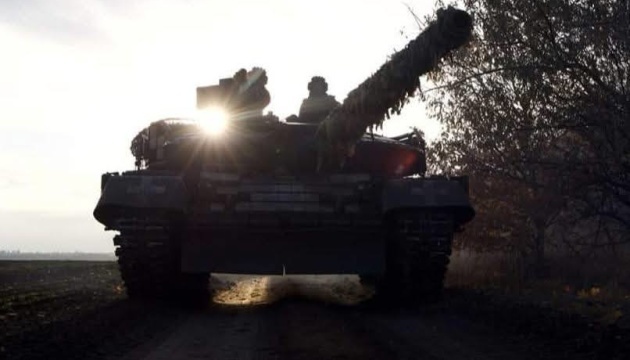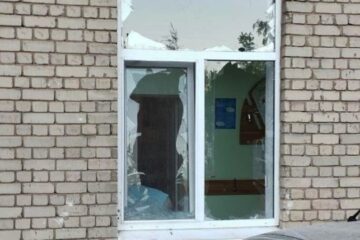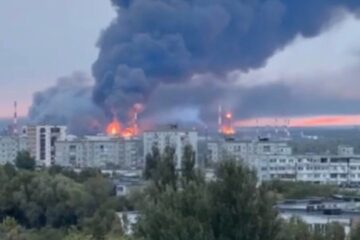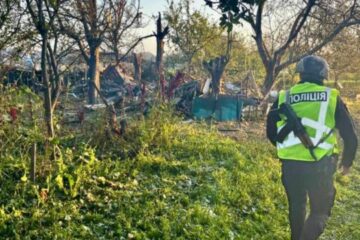Russia’s failed 2025 summer offensive in Ukraine provided new evidence of the discrepancy between the Russian army’s ambitions and real capabilities. The summer of 2025, which Moscow apparently planned to end with victorious reports about the “liberation” of Donbas, is coming to an end with a completely different result. Instead of achieving a rapid breakthrough of the Ukrainian defense and reaching operational freedom, Russia’s 2025 summer offensive employed a slow and costly strategy of attrition, relying on smaller, mobile units and overwhelming firepower to wear down Ukrainian forces. This shift in tactics came after Russia’s initial invasion and subsequent blitzkrieg attempts failed against robust Ukrainian resistance. The so-called “great summer offensive” of the invading forces, which was supposed to determine the outcome of the war, has choked without achieving any of its strategic objectives. However, this does not mean that the threat has passed. Having failed to implement maximalist plans, the adversary managed to create a number of extremely dangerous tactical advantages in certain particular areas. Ahead of the autumn-winter period, it is important to soberly assess what exactly the Kremlin was planning for, where the Ukrainian Defense Forces were able to stop it, and what new challenges have arisen before us on maps of the combat situation.
A MILLION-WORTHY IDEA, A PENNY-WORTHY EXECUTION: AMBITIONS AND REALITY OF THE RUSSIAN OFFENSIVE
The Russian military command’s plans for the summer offensive campaign were both ambitious and pragmatic, based on the resources available to them. The strategic goal, as experts note, was to seize complete control of Donbas and force Ukraine to surrender on the Kremlin’s terms.
Pavlo Lakiychuk, head of security programs at the Center for Global Studies “Strategy XXI,” describes the enemy’s primary plan as follows: “Even before the start of the Russian summer campaign in eastern Ukraine, many observers called it the ‘grand summer offensive’ and Putin’s last attempt to force the Ukrainians into surrender by defeating the Ukrainian Defense Forces ‘on the ground.’ Already in May, it was clear that the Donbas region is the main focus of Russia’s summer offensive. The Kremlin was counting on the exhaustion of Ukraine, a sharp decrease in Western aid, in particular from the United States, and, as a result, a rapid tactical breach in the Donetsk region, with the subsequent collapse of Ukrainian defense lines and a domino effect.”
According to Lakiychuk, “The plan was simple and ambitious, that is, to develop the success in the Kurakhove and Selidove sectors, to capture the Pokrovsk defense node, cut the Pokrovsk-Kostyantynivka highway and close this critical supply route, thus entering the flank and rear of the stationary Toretsk-Chasiv Yar defense line.” The expert explains that the fall of Pokrovsk and the attack on Kostyantynivka from the south would have posed a threat of encirclement of Ukraine’s entire North Donbass force grouping. This, in turn, would have created the conditions for capturing the agglomeration of Kostyantynivka-Druzhkivka-Kramatorsk, and an attack from the Lyman direction towards Sloviansk would have surrounded the Siversky salient. “The strategic defeat of the Armed Forces of Ukraine on a large section of the front, according to the plan of Russian generals, would have led to a chain reaction of the collapse of Ukraine’s defenses not only in the North Donbass sector, but also along the entire defense line,” Lakiychuk argues.
Oleksandr Kovalenko, defense columnist at the Information Resistance think tank, adds tactical details to this strategic picture. He claims that the main goal of the offensive was to create favorable conditions for the autumn-winter campaign. The Russian command, according to him, is well aware that their army is not capable of classic combined-arms operations, and its main resource is expendable fodder.
“That is why the occupiers were tasked to advance toward Pokrovsk, Kostyantynivka, Siversk, Lyman, Borova and Kupyansk during the summer,” Kovalenko notes. The logic of this plan, in his opinion, is obvious: with the onset of cold and bad weather, conducting offensive operations in the open field, while keeping supply lines and support systems operational, becomes extremely difficult. “And whereas in the summer months, they could still use infantry with minimal equipment support (infantry on motorcycles, electric scooters or even donkeys and horses), in winter conditions this is practically impossible. Therefore, it was critically important for Moscow to transfer the fighting to an urban environment, where logistics are simpler and defense is easier to build,” the expert explains.
Thus, the Russians planned to reach the outskirts of key cities by the end of the summer, so that in the winter they could fight right from buildings there. However, as is often the case with Russian plans, there was a gap between the idea and the implementation.
MAP OF COMBAT OPERATIONS: WHERE THE ENEMY FAILED, AND WHERE IT CREATED A DANGER
Analyzing the results of the summer campaign, experts are unanimous in the opinion that the strategic goals of the offensive have been failed. At the tactical level, however, the adversary has still made certain gains that created serious threats to the Defense Forces.
Oleksandr Kovalenko is categorical in his assessment: “As of the end of the summer, we can state that the Russians have not achieved success in any of the specified directions… At best, we can talk about the implementation of no more than 10% of what their command planned.” The key failure, according to him, is that the occupiers have never reached the outskirts of the cities that were to become the arena of winter battles. “For full-fledged and effective urban battles, it is necessary to set up at least three directions of assault in order to encircle a city or at least create the threat of such an encirclement. Currently, none of the key cities – neither Pokrovsk, nor Kostyantynivka, nor Siversk, nor Lyman, nor Kupyansk – has such conditions,” the columnist emphasizes. Even where there is progress, it is limited: Kupyansk is being pressured from only one side, and the same is true for Pokrovsk.
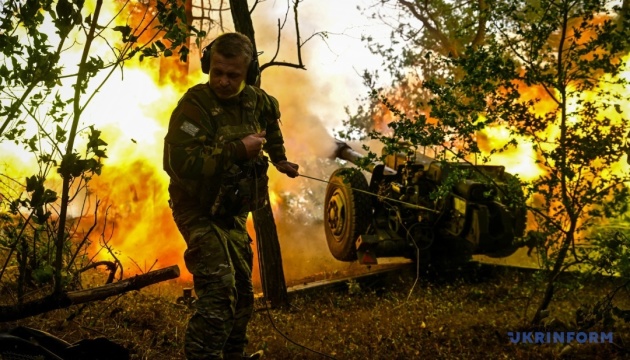
Pavlo Lakiychuk agrees in that the “beautiful” strategic offensive operation turned into a months-long push through stretched Ukrainian defensive lines. He notes that the cost of such an “offensive” turned out to be much higher than planned, and the resources intended for the development of success were “burned up” in attempts to achieve the priority goals.
At the same time, both experts highlight several dangerous areas where the enemy was able to advance.
Pokrovsk direction and the Pokrovsk-Kostyantynivka supply route. Pavlo Lakiychuk calls the occupiers’ breakthrough to this route “the biggest loss of the Ukrainian Defense Forces” over the summer. “This allows the enemy to move in a creeping offensive in two directions: towards the west, to Pokrovsk-Myrnohrad axis and bypassing Pokrovsk from the north and north to Kostyantynivka. This really creates a threat of tactical-operational encirclement of the Pokrovsk-Myrnohrad defense node and of the enemy’s entry to the flanks of Kostyantynivka – from the south of Novoolenivka and from the east through Chasiv Yar. This threatens our entire defense line south of Chasiv Yar in the Toretsk direction. The Russians are operating according to the principle of “not washing, but rolling”.
Novopavlivka direction. Both analysts consider it extremely problematic. Kovalenko puts it in first place in terms of the level of threat, even higher than Pokrovsk. He points to “serious weakening of the frontline on the cross section of the border of Donetsk, Zaporizhzhia and Dnipropetrovsk regions” and Russian attempts to cross the Vorona River. This creates a risk of the enemy advancing into the Dnipropetrovsk region. According to the information available to him, a huge enemy grouping is concentrated in this area – the East grouping of forces, numbering about 100 thousand personnel. Lakiychuk adds that it is in this direction, although secondary for the Russians, that they “act most effectively in terms of the resources and lives expended versus the territorial and strategic gains achieved”.
Siversk direction and Serebryanka Forest. Kovalenko singles out this section as the second most dangerous, since it poses “a direct threat to Siversk, and in the future – to Lyman”.
Kupyansk direction. Lakiychuk emphasizes the importance of the Kupyansk-Vuzlovyy railway junction as a key logistics hub. “Both for us and for the Russians – it is supposed to provide supply routes and freedom of maneuver for the North-South grouping of forces” that are extremely critical for a successful operation. That is why the enemy is pressing here, accepting and disregarding the high number of casualties it suffers in pursuit of its goals”, the analyst says.
The reason behind the enemy’s tactical gains, despite the strategic failure, is the Defense Forces’ failure to quickly adjust to the new reality of war, says Oleksandr Kovalenko. “We are poorly prepared to effectively destroy not dozens of armored columns, but dozens and hundreds of motorcyclists and small assault groups. The same methods are used against armored vehicles, but motorcyclists are expendable fodder that the enemy has thousands of times more than equipment”. This lack of adaptation, in his opinion, is the reason why Ukraine is losing more territory in 2025 than it did in 2024.
FORECASTS FOR THE AUTUMN: DISTRACTION MANEUVERS AND A GAME OF ATTRIBUTION
Since the plan to reach large cities before winter has failed, the autumn-winter campaign will not unfold according to the Kremlin’s scenario. However, the enemy will not give up attempts to achieve its goals, adapting tactics to new conditions.
Oleksandr Kovalenko predicts that in the autumn-winter period “we can expect a certain slowdown in the advance of Russian troops in field conditions”. According to him, the enemy’s focus will be on three key areas:
Pokrovsk. The intensification of fighting is likely to continue and possibly exacerbate.
Kupyansk. Occupiers will be keen to expand the zones under their control.
Chasiv Yar. Capturing the city would be a significant tactical gain for Russia, as it would grant them the high ground and allow for potential advances toward the cities of Kramatorsk, Slovyansk, and Kostyantynivka.
Additionally, Kovalenko expects distracting actions in other directions. “The goal is to distract the Defense Forces of Ukraine, creating a delusive threat to the cities of Kherson or Zaporizhzhia and forcing us to keep significant forces and capabilities in the Zaporizhzhia and Kherson regions.” Attempts to expand zones of control in the border areas of Kharkiv or Sumy regions are also possible, in order to then use these “gains” as bargaining chips on the diplomatic table.
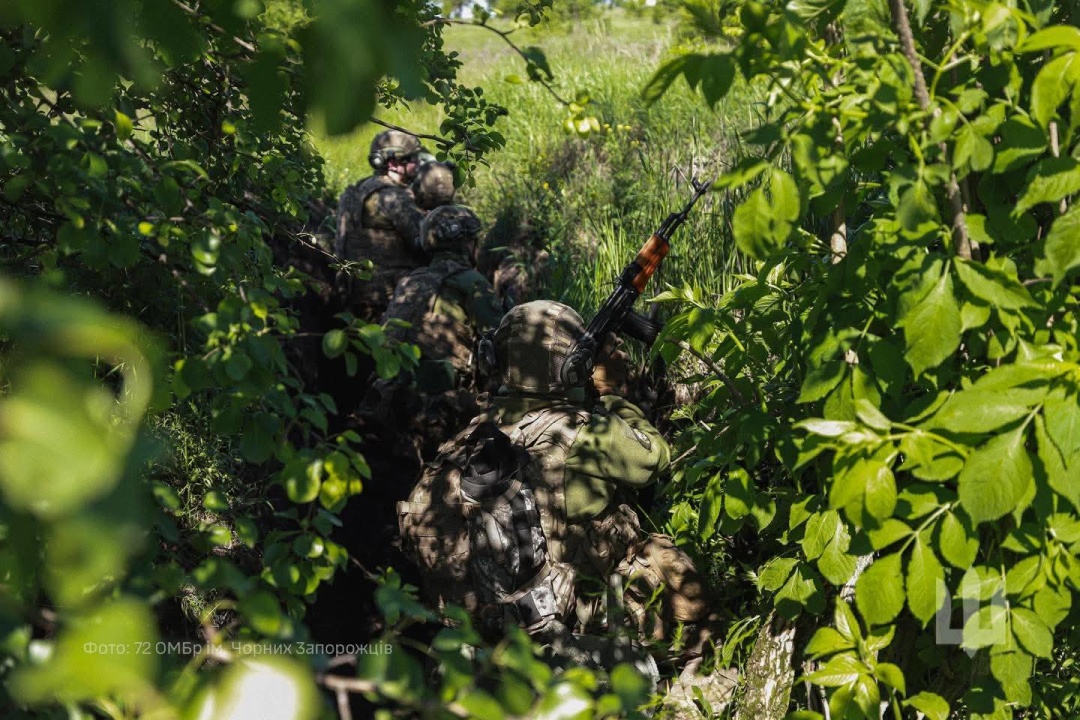
Pavlo Lakiychuk adds: “Is the situation challenging? Yes, indeed. But it is obviously nothing similar to what Russian military command planned to achieve by the end of the summer. And Putin as well understands this – even if his subordinates are lying to him, trying to hide the real state of affairs, it is impossible not to see such a “deviation from plans”. That is why he is in a hurry, bluffing on the “diplomatic front”.
That being said, the analyst points to an encouraging trend for the Armed Forces of Ukraine, emphasizing that the Ukrainian Defense Forces, despite the lack of resources, have recently demonstrated a transition to active defense and counterattacks almost in all sectors of the front. “This is not yet a seizure of the initiative, not a breakthrough, but the trend is encouraging… Maneuverable defense is a challenging, risky tactic. But it is precisely what makes it possible to undermine the enemy, to seize the initiative. And the one who holds the initiative dictates the terms, imposes his will on the enemy,” Lakiychuk emphasizes.
CONCLUSION NOTES
Russia’s failed 2025 summer offensive in Ukraine provided new evidence of the discrepancy between the Russian army’s ambitions and real capabilities. The strategic goals – achieving a major breakthrough of the Ukrainian defense, encirclement of Ukrainian force groupings and creation of bridgeheads for winter urban campaign – have not been achieved. The enemy suffered huge losses in personnel and equipment and burned a significant part of the reserves only to win limited tactical gains in several areas. The breakthrough to the Pokrovsk-Kostyantynivka highway and dangerous activity in the Novopavlivka direction indeed create serious challenges for the Defense Forces. Difficult autumn and winter are ahead. But the enemy will not feel comfortable either.
Despite the external “stability” the Kremlin is trying to demonstrate, experts point to the critical overheating of the Russian economy due to enormous military spending and the inevitable consequences of sanctions. This largely explains Putin’s haste: he needs a decisive result on the battlefield before the economic foundation of his regime begins to crumble. After all, while the Kremlin is trying to win this race against time, Ukraine is not standing idly by. On the contrary, our defense-industrial sector is increasing its capabilities, developing and manufacturing new weapons that can dramatically change the balance of power. The emergence of new projects such as the new Flamingo and Long Neptune cruise missiles is evidence of this. These missiles, capable of hitting targets at distances of thousands of kilometers, pose an immediate threat to strategic facilities deep inside enemy territory. Let’s not forget about our long-range drones (according to the defense outlet Defense Express, Ukraine manufactures three thousand FР-1 long-range strike drones every month, and there are also drones such as Liuty (“Furious”), Bober and Morok among other long-range UAVs). And this is no longer theory, but practice. The aftermath of systemic strikes on the pain points of Russia’s economy is felt throughout its territory. An example is the fuel shortage in the Kuril Islands of Russia’s Sakhalin Oblast, where AI-92 gasoline has completely disappeared from pumps available to the public (and Primorye and Transbaikalia are next in line). Overnight on August 27, Ukrainian drones targeted the Ryazan–Moscow pipeline — one of the main arteries for supplying petroleum products to Moscow. Sources in Ukraine’s Defense Intelligence (HUR) stated that the transport of petroleum products to Moscow was suspended indefinitely. Ukrainian drone strikes on oil refineries during August 2025 have damaged a significant portion of Russia’s refining capacity. The attacks have created fuel shortages in several Russian regions, with queues at gas stations and rationing being reported. Such attacks will be continued. What means most now is not to stop halfway, but consistently make every Russian region free from gasoline (and not only).
…The situation remains challenging, but retreating into blind defense is definitely out of question. The summer campaign has once again proven that the Kremlin’s plans are not a sentence, but just a set of goals the Armed Forces of Ukraine are learning to thwart and are thwarting.
Myroslav Liskovych, Kyiv
Source: The 2025 Russian summer offensive in Ukraine has failed to accomplish its objectives

